What Time Will the Total Solar Eclipse Be Viewable in Your Area? All About the Path of Totality
The rare total solar eclipse starts in the United States around noon CDT
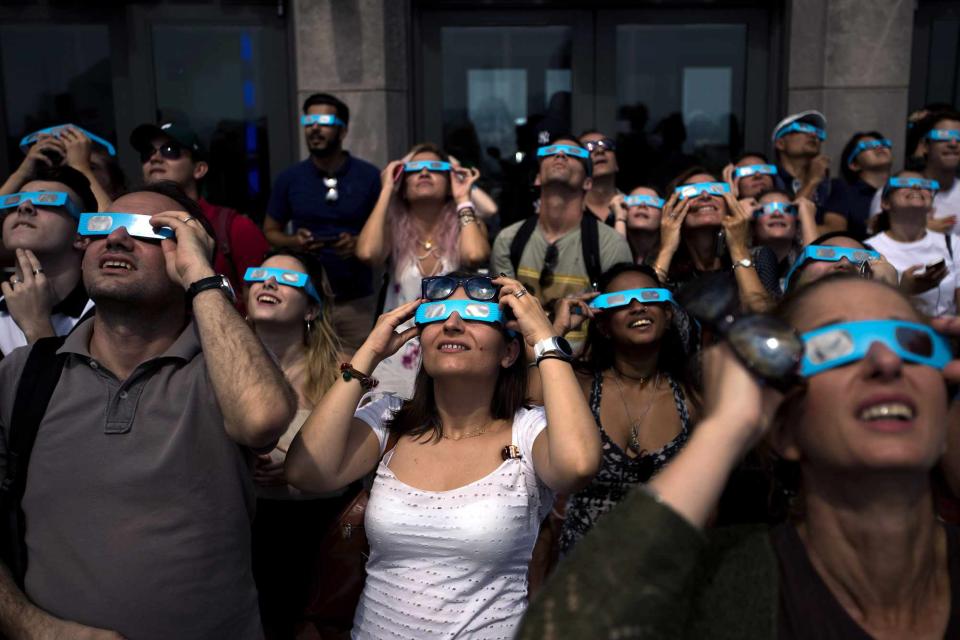
Drew Angerer/Getty
People watching the solar eclipse in New York CityPrepare for the skies to go dark as the total solar eclipse heads your way on April 8.
The upcoming total solar eclipse, the first of its kind since 2017, occurs when the Moon passes between the Sun and Earth, making the face of the Sun obscured from view. As a result, many people around the United States will experience a darkened sky.
Because a solar eclipse is incredibly rare, with the next one not taking place until 20 years from now, many skygazers are making a full event of the spectacle.
While some people may feel the astrological affects of the event, others in the path of totality will have a front-row view as the eclipse makes its way from Mexico through the United States and into Canada in the afternoon.
Wondering if you’ll experience the complete darkness of the solar eclipse? Read ahead to learn more about when the total solar eclipse will make its way to your city.
Related: Here’s How to Tell if You Have a Pair of Fake Solar Eclipse Glasses
What time does the solar eclipse start?
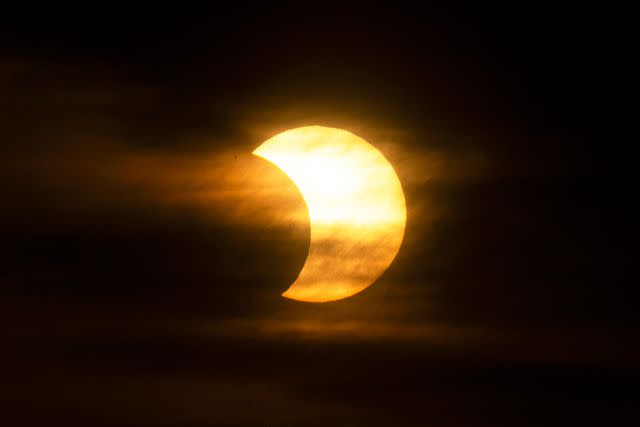
Kena Betancur/AFP/Getty
An eclipse in New York CityThe eclipse begins in Mexico on Monday, April 8 at about 11:07 a.m. PDT. From there, it will make its way to the United States, crossing into Texas at about 1:27 p.m. CDT.
What cities are in the path of totality for the solar eclipse?
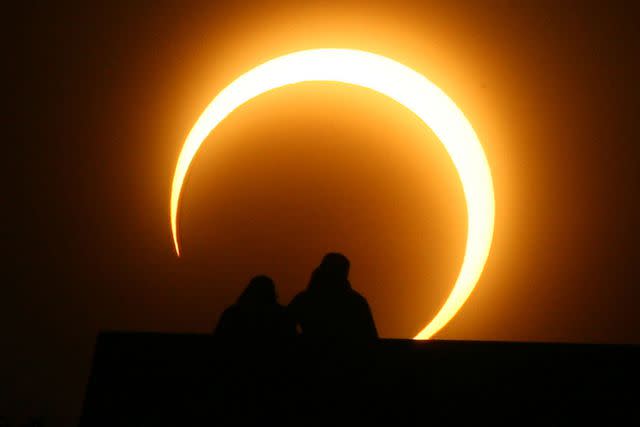
STR/AFP via Getty
A couple watching an eclipseThe path of totality, or the area in which people will experience the Moon completely blocking the Sun, will range between 108 and 122 miles wide in North America, per NASA. That is significantly larger than the 2017 eclipse, which ranged from about 62 to 71 miles wide. NASA also reports that an estimated 31.6 million people live in the path of totality this year, compared to 12 million in 2017.
Additionally, those in the line of the path of totality will also experience a partial eclipse before and after the totality. According to NASA, “99% of people who reside in the United States will be able to see the partial or total eclipse from where they live.” They add that every contiguous U.S. state, plus parts of Alaska and Hawaii, will at least experience a partial solar eclipse.
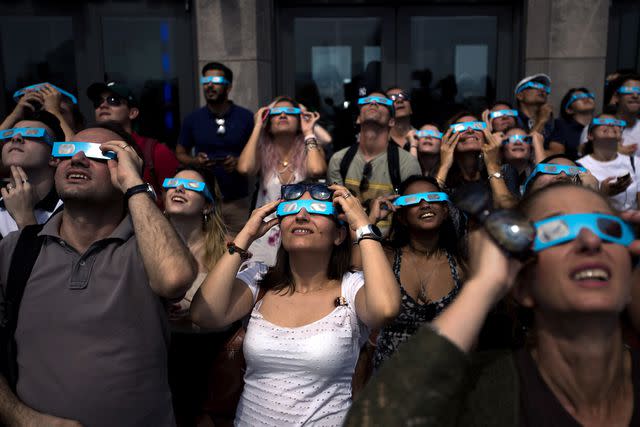
Drew Angerer/Getty
People watching the solar eclipse in New York CityBelow is when each city in the path of totality will begin to experience the totality of the eclipse. For a more detailed chart on start times, visit NASA.
Dallas, Texas, 1:40 p.m. CDT
Idabel, Okla., 1:45 p.m. CDT
Little Rock, Ark., 1:51 p.m. CDT
Poplar Bluff, Miss., 1:56 p.m. CDT
Paducah, Ky., 2:00 p.m. CDT
Carbondale, Ill., 1:59 p.m. CDT
Evansville, Ind., 2:02 p.m. CDT
Cleveland, Ohio, 3:13 p.m. EDT
Erie, Pa., 3:16 p.m. EDT
Buffalo, N.Y., 3:18 p.m. EDT
Burlington, Vt., 3:26 p.m. EDT
Lancaster, N.H., 3:27 p.m. EDT
Caribou, Maine, 3:32 p.m. EDT
Related: Keeping Dogs and Cats Safe During an Eclipse: Expert Pet Advice on the Spring Solar Eclipse
When does the solar eclipse end?
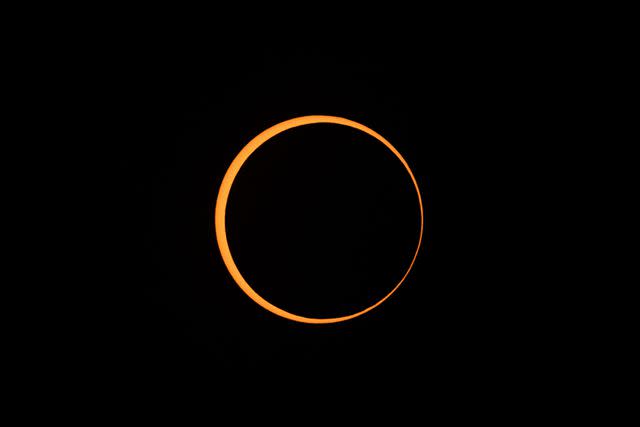
Rick Kern/Getty
An eclipse in TexasAfter making its way through Maine, the solar eclipse will come to a close in Canada. The total solar eclipse will start in Brantford, Ont. at 3:17 p.m. and conclude its path of totality in Perth-Andover, N.B. at 4:35 p.m., per CBC News.
Related: Where to Buy Solar Eclipse Glasses? All About the Specialized Glasses Recommended by NASA
What time will the solar eclipse be viewable in your area?
As previously stated, even if you don’t live near the path of totality, you will likely still experience a partial eclipse in your area.
NASA has made it easy to figure out the best viewing times for your city. Simply visit NASA’s website and log in your zip code to their handy calculator. From there, you can track the various phases of the solar eclipse in your area, including watch times.
For more coverage on the total solar eclipse, you can watch PEOPLE's live stream on X and Facebook.
Happy solar eclipse day! https://t.co/gMICgNGbw4
— People (@people) April 8, 2024
For more People news, make sure to sign up for our newsletter!
Read the original article on People.

